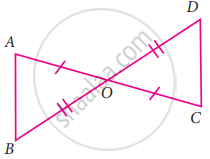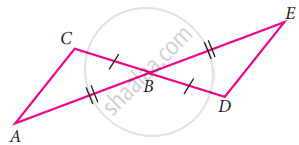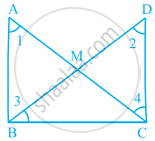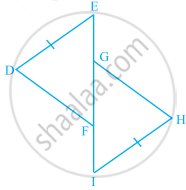Advertisements
Advertisements
Question
In the given figure, which pairs of triangles are congruent by SAS congruence criterion (condition)? if congruent, write the congruence of the two triangles in symbolic form.

Solution
In ∆SUT and ∆XYZ
ST = XZ = 3 cm ......(Given)
UT = YZ = 4 cm ......(Given)
∠STU = ∠XZY = 30° ......(Given)
∴ ∆SUT ≅ ∆XYZ ......(SAS criterion)
APPEARS IN
RELATED QUESTIONS
Given below are measurements of some parts of two triangles. Examine whether the two triangles are congruent or not, by using the SAS congruence rule. If the triangles are congruent, write them in symbolic form.
∆ABC, AB = 7 cm, BC = 5 cm, ∠B = 50°.
∆DEF, DE = 5 cm, EF = 7 cm, ∠E = 50°.
Consider the given pairs of triangles and say whether each pair is that of congruent triangles. If the triangles are congruent, say ‘how’; if they are not congruent say ‘why’ and also say if a small modification would make them congruent:
Construct a triangle ABC with given conditions.
AB = 7 cm, AC = 6.5 cm and ∠A = 120°
Construct a triangle XYZ with the given conditions.
BC = 8 cm, AC = 6 cm and ∠C = 40°
Using the given figure, prove that the triangles are congruent. Can you conclude that AC is parallel to DE
In the given figure, M is the mid-point of both AC and BD. Then ______.

In the given figure, ∆PQR ≅ ∆ ______.

In the given figures, two triangles are congruent by RHS.

In the given figure, which pairs of triangles are congruent by SAS congruence criterion (condition)? if congruent, write the congruence of the two triangles in symbolic form.

In the given figure, DE = IH, EG = FI and ∠E = ∠I. Is ∆DEF ≅ ∆HIG? If yes, by which congruence criterion?

